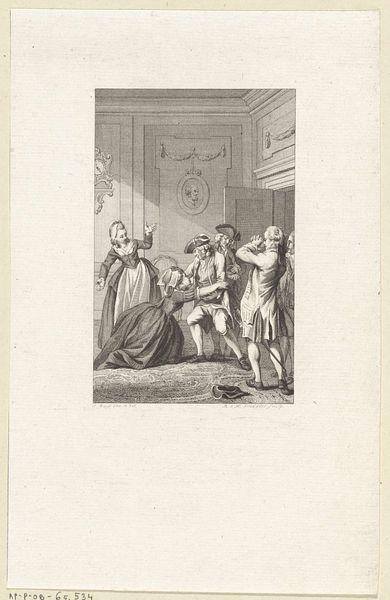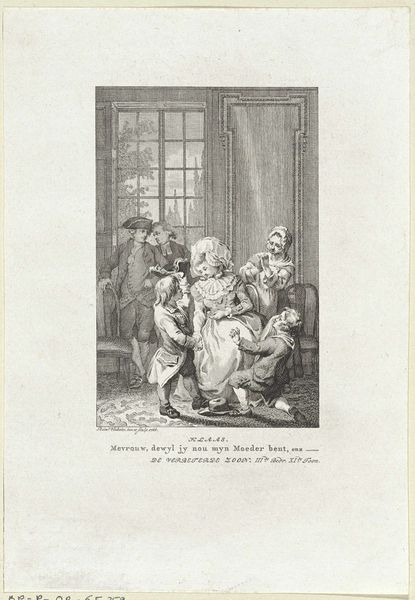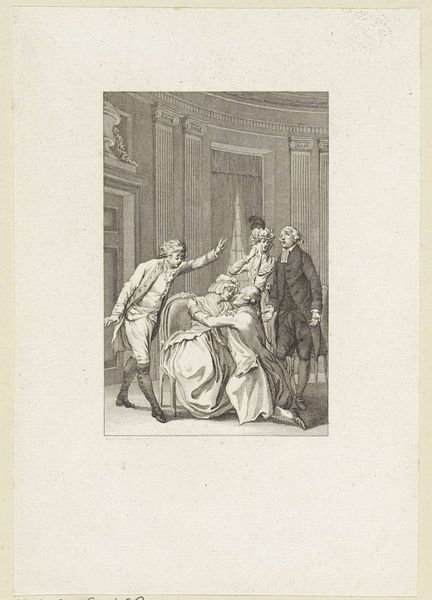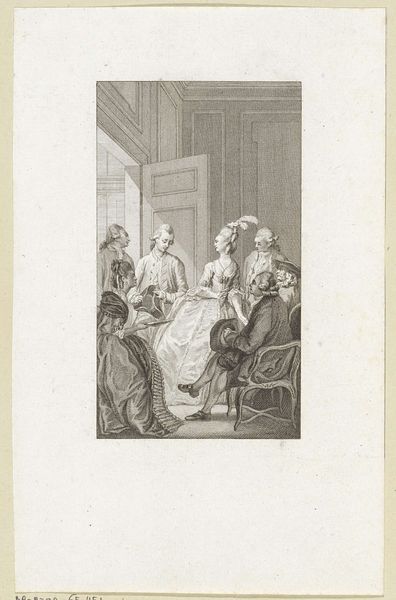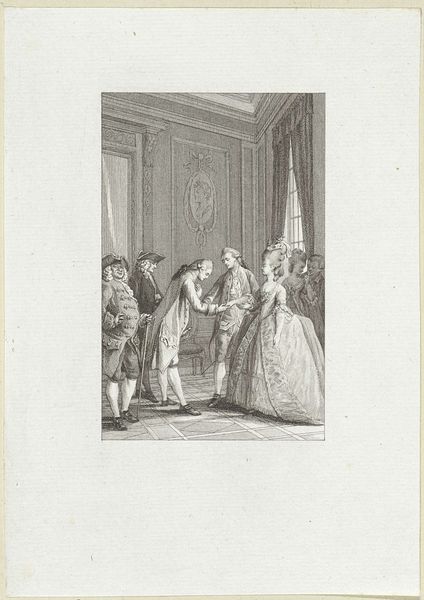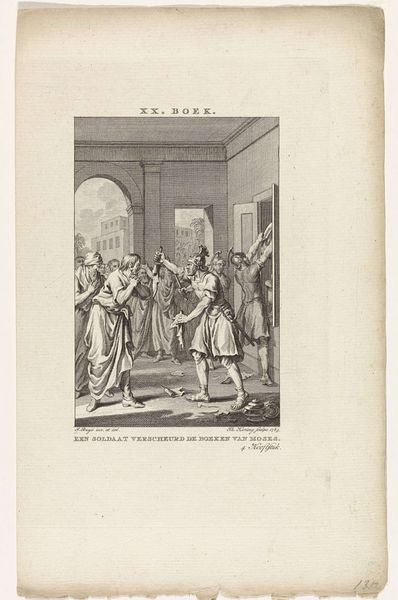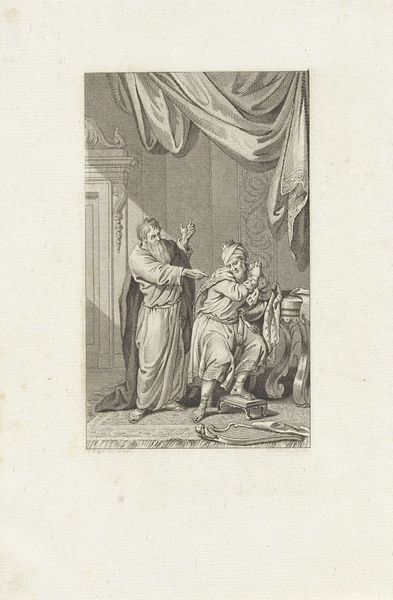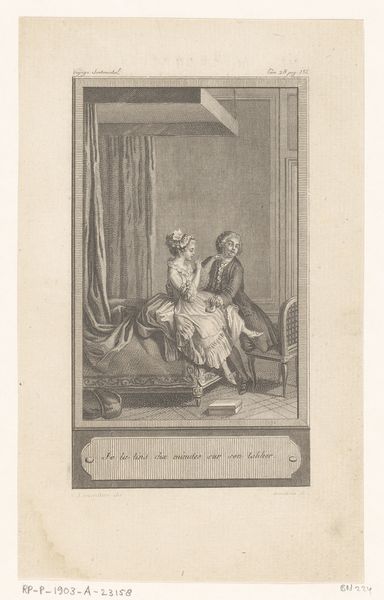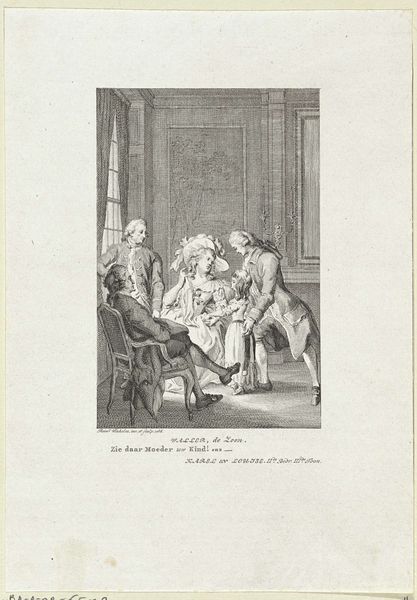
Dimensions: height 200 mm, width 127 mm
Copyright: Rijks Museum: Open Domain
Curator: Before us is "Les Précieuses Ridicules," an engraving dating from 1749 to 1817. It’s currently held at the Rijksmuseum. The piece is attributed to François Denis Née. Editor: Well, my initial reaction is that it has a rather satirical air. There’s a cramped composition, a stage-like quality. Are these individuals performing? Or being observed? The severe lines are intriguing, almost suffocating the figures with details. Curator: Indeed. Considering its socio-historical context, this engraving offers a pointed commentary on the performative aspects of the French aristocracy. The subject, likely derived from Molière's play of the same name, satirizes the affected manners and exaggerated language of women—the “précieuses”—aspiring to high social status. Editor: That makes the sharp contrast between the delicate lace and frills, rendered meticulously by the engraver’s tool, and the overall claustrophobic composition even more striking. It almost traps these women within their own artifice. Notice how the lines of the interior converge, directing our eye not towards their faces, but the excess of fabric. Semiotically, one could read that the artist prioritized external appearances over genuine essence. Curator: Absolutely. The artist effectively uses the print medium to disseminate a specific critique about the perceived decadence and superficiality of the French court at the time. Engravings were accessible. Therefore they had a broad audience and, it’s likely, fuelled popular sentiment concerning the perceived moral decay within the elite social strata. Editor: Right, I'm starting to see it more clearly. It’s as much about the staging as it is about the individual actors. Those heavily adorned hats! The rigid poses. Every line contributes to this sense of elaborate constraint. There is some mastery to see how such linear economy can portray such social opulence, even ridicule. Curator: Precisely. It serves as a visual document of the social theater played out within those gilded cages. It seems like a commentary about artifice itself. Editor: And now I recognize the powerful intersection of form and function, here to make that historical observation hit its mark. Curator: It all reveals how something that looks purely decorative in the present might be more powerful—more biting—in the broader view.
Comments
No comments
Be the first to comment and join the conversation on the ultimate creative platform.

